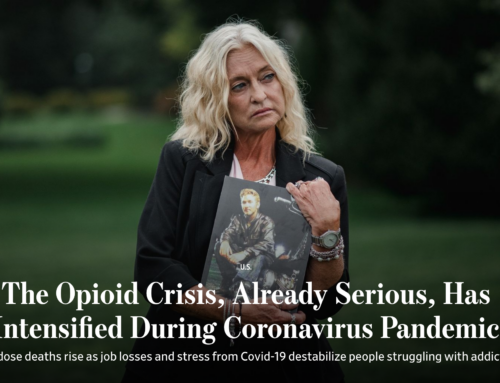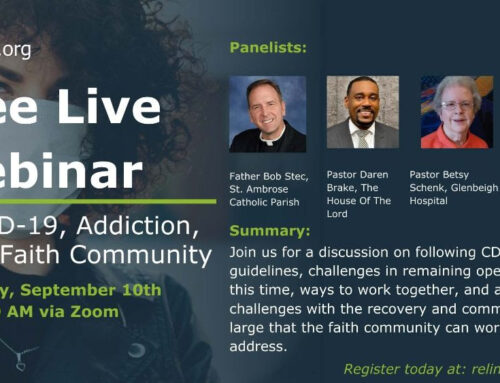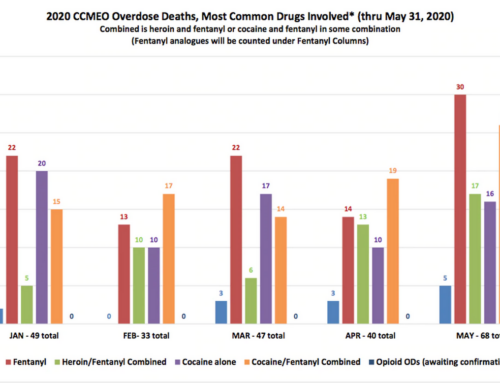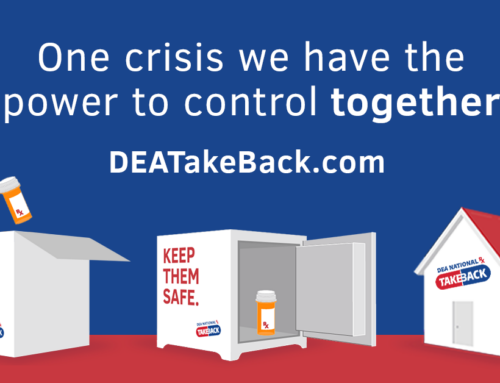CLEVELAND, Ohio — Scott Moran spent the last three years rushing out of the door as part of Cleveland police department’s specialized unit that responds to each opioid overdose in the city.
The veteran narcotics detective, who is part of a seven-man team called the Heroin Involved Death Investigation unit, uses a non-traditional approach to conducting opioid-specific investigations that require investigators to be equal parts homicide detectives, narcotics cops and social workers.
Moran said his unit had a lot of trial-and-error the first few years, but have since become a national model replicated by city police departments across the country. Cities across the country have paid for Moran, one of the lead investigators in the unit, to travel to their cities so he can teach them Cleveland’s model.
Public health and law enforcement officials alike have pointed to the unit as one of many reasons that the fight against the opioid crisis finally is gaining traction in Cleveland.
Cuyahoga County had 98 overdose deaths attributed to opioids in the final three months of 2017. This came after the county averaged about 50 a month in the previous nine months of the year.
The first four months of 2018 saw 137 deaths, compared to 192 through during the same period in 2017 and 139 in 2016. In Cleveland, there were 64 deaths in the first three months of 2018 compared with 82 in 2017.
Moran said the journey from a newly-minted unit in 2014 to being on the forefront of combating the opioid epidemic wasn’t easy. Initially, there was resistance from some investigators, who viewed the users as law-breakers that they previously would have arrested for drug possession.
That mindset changed when Moran came in regular contact with people who overdosed and their families. He realized users who tried to stop paid a severe physical price while going through withdrawals, making it nearly impossible to stop using.
He keeps in contact with a handful of overdose victims who survived and sought treatment, including one woman who overdosed while pregnant after her boyfriend and best friend died of opioid overdoses. She’s been clean 18 months.
“The key is you have to have a mindset change,” Moran said. “Once you get to the scenes and you start listening to these victims, you view them as human beings and not drug addicts. Then you want to help them. You feel bad for them and you want to see them get help.”
That’s one facet of their job. The other is piecing together overdose trends and zeroing in on dealers whose drugs lead to overdoses and deaths.
The investigations are difficult, especially in Cleveland. Moran said one Friday night last year he responded to the scene of 22 overdoses. Of those, 17 victims cooperated with investigators. They had 15 different dealers. Moran attributed that because of the readily available access dealers have to ordering fentanyl and carfentanil from the internet.
“When fentanyl hit, and then carfentanil, we had hoped there was just one or two dealers that we could link all of it too,” Moran said. “That’s not the case here.”
Part of the difficulty is the ever-changing nature of drug-dealing. Moran said some of the drop in overdoses in the city could be attributable to dealers cutting less fentanyl or carfentanil into their drugs.
In some cases, investigators have found dealers who carry naloxone kits in case their clients overdose. That way they can avoid being prosecuted for killing their clients in order to avoid potential prosecution.
Moran said the drugs are still readily available on the streets. He said a few months ago he was off-duty in his neighborhood when a dealer approached him and offered to sell him heroin, thinking he was an addict milling around looking for drugs. Two weeks later, Moran and other officers raided the dealer’s home.
He cautioned that despite the progress made in the last few months, they’re always one bad batch of drugs away from another increase in overdose deaths. He said that happened at the end of April and beginning of May, when seven people died in a five-day span in the city.
Despite that hiccup, the recent drop in overdoses in Cleveland has allowed Moran and his fellow detectives to do more thorough investigations targeting specific dealers, some of whom are targeting less than reputable sober houses where some addicts try to get clean.
“We try to not just be the police officers taking you to jail and breaking down your door, but be a role model and mentor them a little bit too,” Moran said. “We want to make sure they know we want them to stay alive, that they stay clean that they stay off that stuff.”
ORIGINAL ARTICLE: https://www.cleveland.com/metro/index.ssf/2018/05/specialized_cleveland_police_u.html





